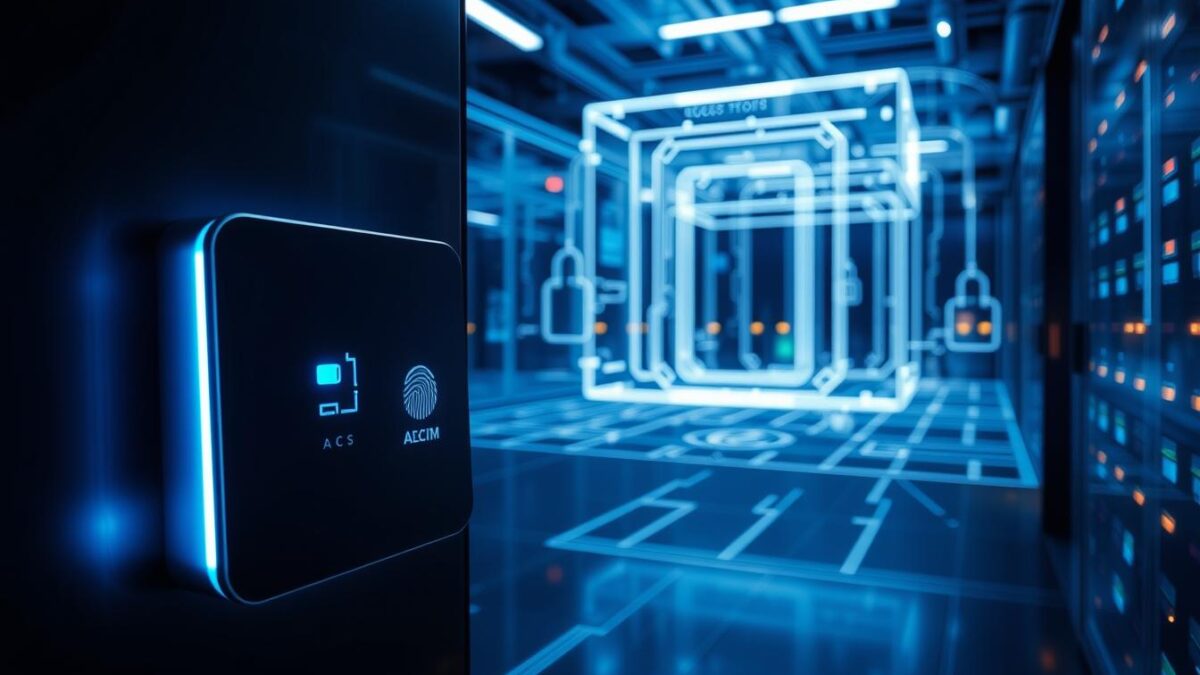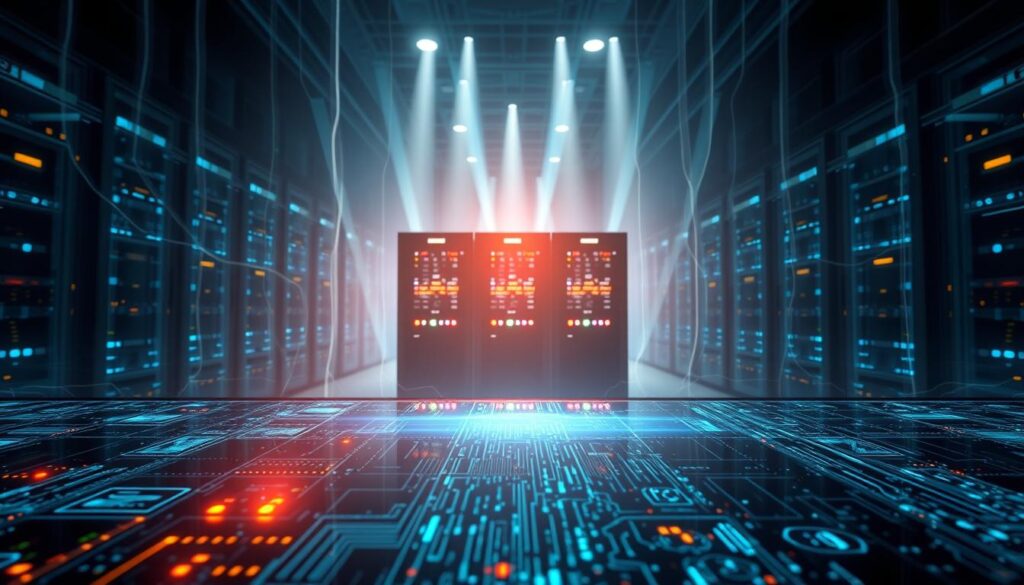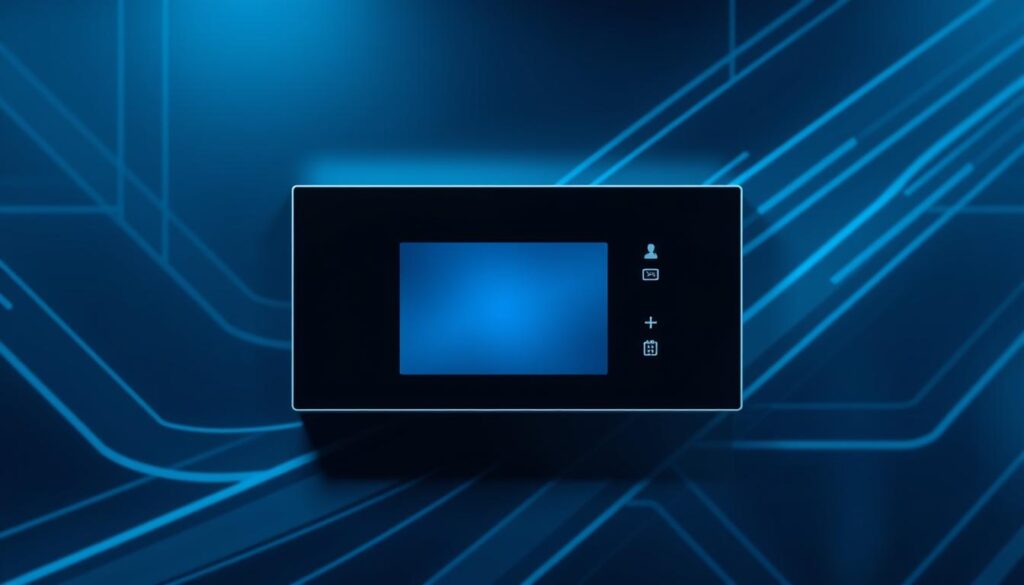
Streamline Secure Access
In today’s digital world, secure access is crucial for businesses to protect sensitive information from cyber threats and data breaches. A comprehensive solution is necessary to ensure robust protection. Secure access, access control, and secure login are essential components of this solution.
Implementing secure access measures can help businesses safeguard their data and prevent unauthorized access. Access control systems play a vital role in securing access, and secure login protocols are essential for verifying user identities. By prioritizing secure access, businesses can minimize the risk of data breaches and cyber attacks.
Secure access is a top priority for modern businesses, and it’s essential to have a thorough understanding of the latest solutions and technologies available. By exploring the fundamentals of secure access, businesses can implement effective measures to protect their sensitive information.
Introduction to Secure Access
Key Takeaways
- Secure access is essential for protecting sensitive business information
- Access control systems are critical for securing access
- Secure login protocols verify user identities and prevent unauthorized access
- Implementing secure access measures minimizes the risk of data breaches and cyber attacks
- Businesses must prioritize secure access to safeguard their data
Understanding the Fundamentals of Secure Access
Secure access is a critical component of modern business, as it ensures that sensitive information and systems are protected from unauthorized access. At its core, secure access involves implementing a robust authentication system that verifies the identity of users and grants access to authorized personnel. This is particularly important in today’s digital landscape, where data protection is a top priority for businesses of all sizes.
A secure gateway is a crucial element of secure access, as it provides a single entry point for users to access sensitive information and systems. By implementing a secure gateway, businesses can ensure that all access requests are thoroughly vetted and authorized, reducing the risk of security breaches and data theft.
- Implementing multi-factor authentication to verify user identities
- Using encryption to protect sensitive data
- Regularly updating and patching security protocols to prevent vulnerabilities
By understanding the fundamentals of secure access and implementing a robust authentication system, businesses can protect their sensitive information and systems from unauthorized access, ensuring the integrity of theirdata protectionefforts and maintaining asecure gatewayto their digital assets.
The Critical Role of Authentication Systems
Authentication systems are a crucial component of secure access, as they verify the identity of users and ensure that only authorized personnel have access to sensitive information. In today’s digital landscape, multi-factor authentication has become the gold standard for securing online accounts and protecting against cyber threats. By requiring users to provide multiple forms of verification, such as passwords, biometric data, or one-time codes, multi-factor authentication provides an additional layer of security that makes it much more difficult for hackers to gain unauthorized access.
Secure connections are also essential for protecting data in transit. Secure connections use encryption protocols, such as SSL/TLS, to scramble data and prevent eavesdropping or tampering. This ensures that sensitive information, such as financial data or personal identifiable information, remains confidential and secure. By combining multi-factor authentication with secure connections, organizations can create a robust security framework that protects against a wide range of threats.
- Improved security: Authentication systems help to prevent unauthorized access and protect against cyber threats.
- Increased efficiency: Automated authentication systems can streamline the login process and reduce the need for manual intervention.
- Enhanced user experience: By providing a secure and seamless login experience, authentication systems can improve user satisfaction and reduce frustration.
By implementing robust authentication systems and secure connections, organizations can protect their sensitive information and prevent cyber threats. This is especially important in today’s digital landscape, where data breaches and cyber attacks are becoming increasingly common.
Implementing Multi-Factor Authentication for Enhanced Security
As we continue to navigate the complex landscape of network security, it’s essential to implement robust measures to protect against cyber threats. One effective way to enhance security is by implementing multi-factor authentication (MFA). MFA adds an extra layer of protection to the traditional username and password combination, making it more difficult for unauthorized users to gain access to sensitive information.
In the context of user authorization, MFA plays a critical role in ensuring that only authorized individuals can access specific resources or data. By requiring multiple forms of verification, such as a password, fingerprint, or one-time code, MFA significantly reduces the risk of unauthorized access.
- Token-based authentication
- Biometric authentication
- Smart card authentication
These methods can be used in combination to provide an additional layer of security, making it more challenging for attackers to breach the system.
By implementing MFA, organizations can significantly enhance their network security posture and protect against various types of cyber threats. It’s essential to note that MFA is not a one-size-fits-all solution and should be tailored to the specific needs of the organization, taking into account factors such as user authorization and access control.
Secure Gateway Architecture and Integration
Secure access is a critical component of any organization’s security strategy, and a secure gateway is essential for providing secure access to sensitive information and systems. A secure gateway acts as a single entry point for users, ensuring that all traffic is inspected and authorized before being allowed to access the network.
Access control is also a vital aspect of secure gateway architecture, as it ensures that only authorized users have access to sensitive information and systems. This is achieved through the use of secure socket layer (SSL) protocols and transport layer security (TLS) protocols, which provide end-to-end encryption for all traffic passing through the gateway.
Some of the benefits of secure gateway architecture and integration include:
- Improved security posture through the use of advanced threat protection and intrusion prevention systems
- Enhanced visibility and control over network traffic, allowing for more effective monitoring and incident response
- Simplified management and maintenance, reducing the administrative burden on IT teams
By implementing a secure gateway architecture, organizations can ensure that their sensitive information and systems are protected from unauthorized access, while also providing a secure and reliable access control mechanism for authorized users.
User Authorization and Access Management
Effective user authorization and access management are crucial for ensuring that users have the necessary permissions and access to sensitive information and systems. A secure login process is the first line of defense against unauthorized access. This is where an authentication system comes into play, verifying the identity of users and granting access based on their roles and permissions.
A well-designed authentication system should be able to handle various types of users, from employees to customers, and provide a seamless and secure login experience. This can be achieved through the implementation of role-based access control (RBAC), which assigns roles and permissions to users based on their job functions and responsibilities.
Key Strategies for Access Management
- Implementing least privilege access to minimize the risk of unauthorized access
- Separation of duties to prevent a single user from having too much power
- Regular monitoring and auditing of user activity to detect and respond to security incidents
By implementing these strategies, organizations can ensure that their user authorization and access management systems are secure, efficient, and aligned with their business goals. A secure login and authentication system are essential components of this process, providing a solid foundation for protecting sensitive information and preventing unauthorized access.
Data Protection Through Secure Connections
Protecting sensitive information is crucial in today’s digital landscape. Secure connections play a vital role in ensuring that data is protected from unauthorized access and cyber threats. By utilizing secure connections, individuals and organizations can safeguard their data and maintain the confidentiality, integrity, and availability of their information.
One of the key benefits of secure connections is the use of SSL/TLS encryption. This protocol ensures that data is encrypted and can only be accessed by authorized parties. Additionally, secure socket layer (SSL) protocols provide an extra layer of protection, making it more difficult for hackers to intercept and exploit sensitive information.
Some of the ways to achieve secure connections include:
- Implementing SSL/TLS encryption
- Using secure socket layer (SSL) protocols
- Utilizing cloud-based data protection solutions
- Implementing software-defined perimeter (SDP) solutions
By prioritizing network security and secure connections, individuals and organizations can protect their sensitive information and maintain the trust of their customers and stakeholders. As technology continues to evolve, it’s essential to stay up-to-date with the latest advancements in data protection and secure connections to ensure the confidentiality, integrity, and availability of sensitive information.

Building a Robust Network Security Framework
To ensure secure access and protect against cyber threats, it’s essential to have a robust network security framework in place. This framework should include a combination of security measures, such as network segmentation, security policy implementation, and incident response planning. By implementing these measures, organizations can ensure that their networks are secure and that sensitive data is protected.
A key component of a robust network security framework is access control. This involves controlling who has access to the network and what actions they can perform. By implementing secure login procedures, organizations can ensure that only authorized personnel have access to the network and that sensitive data is protected.
Some key strategies for building a robust network security framework include:
- Implementing network segmentation to isolate sensitive data and systems
- Developing and implementing security policies and procedures
- Conducting regular security audits and risk assessments
- Having an incident response plan in place in case of a security breach
By following these strategies and implementing a robust network security framework, organizations can ensure that their networks are secure and that sensitive data is protected. This will help to prevent cyber threats and ensure secure access to the network.
The Business Benefits of Streamlined Secure Access
Streamlined secure access offers numerous benefits to businesses, including improved security, increased productivity, and enhanced user experience. By implementing multi-factor authentication, companies can significantly reduce the risk of data breaches and cyber attacks. This is because multi-factor authentication requires users to provide additional verification factors, making it more difficult for unauthorized individuals to gain access to sensitive information.
Another key benefit of streamlined secure access is user authorization. By implementing role-based access control, companies can ensure that users only have access to the resources and data they need to perform their jobs. This not only improves security but also reduces the risk of data breaches and cyber attacks. Some of the benefits of streamlined secure access include:
- Improved security and reduced risk of data breaches
- Increased productivity and efficiency
- Enhanced user experience and satisfaction
- Reduced costs and improved return on investment

Overall, streamlined secure access is essential for businesses that want to protect their sensitive information and improve their overall security posture. By implementing multi-factor authentication and user authorization, companies can ensure that their data and resources are secure and only accessible to authorized individuals.
Conclusion: Embracing Security Innovation for Future Success
As we conclude this journey through the world of secure access, it’s clear that embracing security innovation is essential for businesses to thrive in the future. By implementing robust secure access solutions, organizations can safeguard their data, improve productivity, and enhance the user experience, all while staying ahead of evolving cyber threats.
Through the integration of advanced authentication systems and multi-factor authentication protocols, businesses can ensure that only authorized individuals have access to sensitive information. Secure gateway architectures and user authorization strategies further strengthen the overall access control framework, providing an additional layer of protection against unauthorized access.
Looking ahead, the continued development of secure connections and network security technologies will be crucial in maintaining a resilient and adaptable security posture. By staying informed about industry trends and embracing innovative security solutions, organizations can future-proof their operations and ensure long-term success.
FAQ
What is secure access in modern business?
Secure access refers to the process of controlling and managing access to sensitive information, systems, and networks. This includes implementing access control systems, secure login protocols, and authentication systems to ensure that only authorized personnel have access to sensitive data.
What are the key components of access control systems?
The key components of access control systems include user authentication, authorization, and accounting. These systems verify the identity of users, ensure that they have the necessary permissions to access specific resources, and track user activity for security and compliance purposes.
How have security protocols evolved over time?
Security protocols have evolved significantly, with the introduction of advanced technologies such as secure gateway architectures, secure socket layer (SSL) protocols, and transport layer security (TLS) protocols. These advancements have helped to enhance the security and reliability of data transmission and access control.
Why is authentication important for secure access?
Authentication systems play a critical role in secure access by verifying the identity of users and ensuring that only authorized personnel have access to sensitive information. Multi-factor authentication, which combines multiple methods of verification, provides an additional layer of security to protect against cyber threats.
What are the different types of multi-factor authentication methods?
Common multi-factor authentication methods include SMS-based authentication, token-based authentication, and biometric authentication. Each method offers unique benefits and can be tailored to the specific security requirements of an organization.
What are the best practices for implementing multi-factor authentication?
Best practices for MFA implementation include using risk-based authentication, which adjusts the level of security based on the risk of the transaction, and implementing adaptive authentication, which learns user behaviors to detect and prevent suspicious activity.
What are the common challenges associated with multi-factor authentication?
Common challenges with MFA include user adoption, as some users may find the additional verification steps inconvenient, and the risk of phishing attacks, where attackers attempt to steal login credentials or bypass MFA methods.
What is the role of a secure gateway in secure access?
A secure gateway provides a secure entry point for users to access sensitive information and systems. Secure gateways utilize SSL/TLS encryption and other security protocols to protect data in transit and ensure that only authorized users can access the network.
What is role-based access control (RBAC)?
Role-based access control (RBAC) is a permission management strategy that assigns specific roles and permissions to users based on their job functions and responsibilities. This helps to ensure that users only have access to the resources they need to perform their duties, reducing the risk of unauthorized access.
How can organizations monitor and audit user activity?
Monitoring and audit trails are critical for ensuring the security of sensitive information and systems. Organizations can implement logging and monitoring solutions to track user activity, detect suspicious behavior, and maintain compliance with industry regulations and standards.
How can secure connections protect data?
Secure connections, such as those provided by SSL/TLS encryption and secure socket layer (SSL) protocols, help to protect sensitive data in transit by ensuring that the data is encrypted and secure from unauthorized access. This is a crucial component of data protection in a secure access environment.
What are the key strategies for building a robust network security framework?
Key strategies for building a robust network security framework include network segmentation, which separates sensitive data and systems into distinct segments to limit the spread of threats, the implementation of security policies and procedures, and the development of an incident response plan to address security incidents and breaches.
What are the business benefits of streamlined secure access?
Streamlined secure access provides numerous business benefits, including improved security, increased productivity, and enhanced user experience. By implementing robust secure access solutions, businesses can protect against cyber threats, improve employee and customer satisfaction, and drive overall business success and growth.